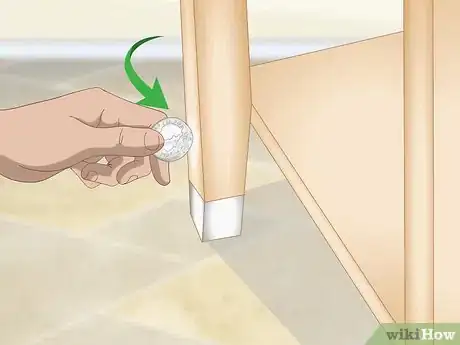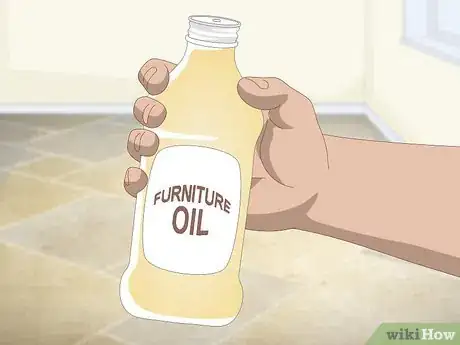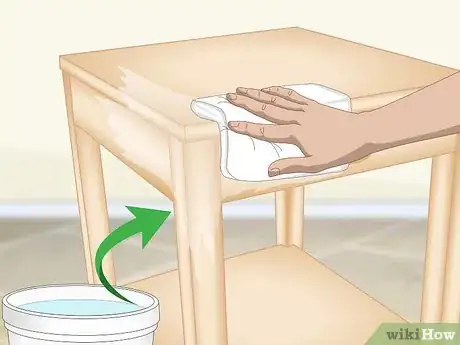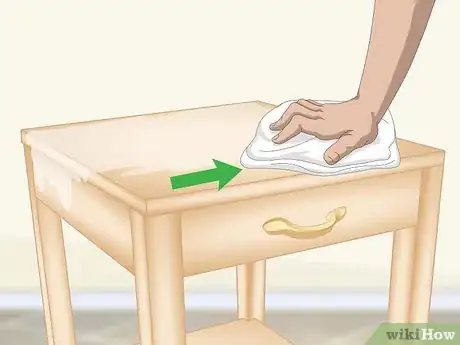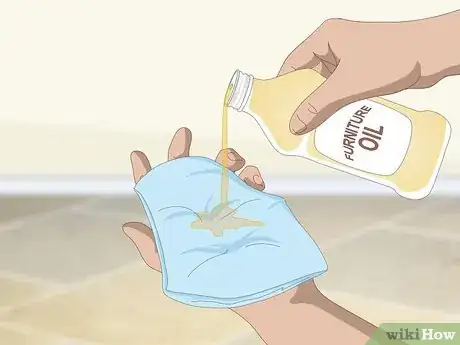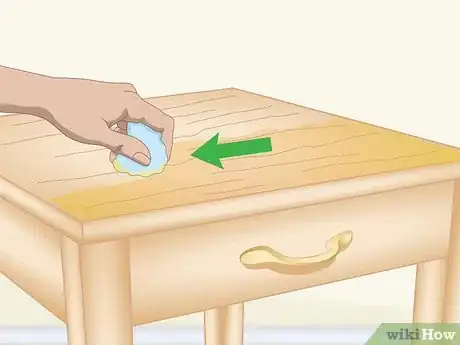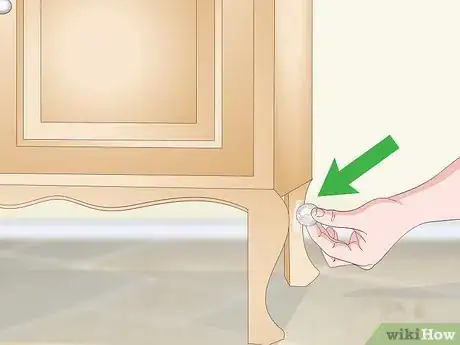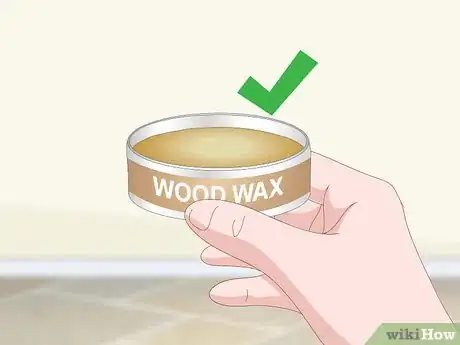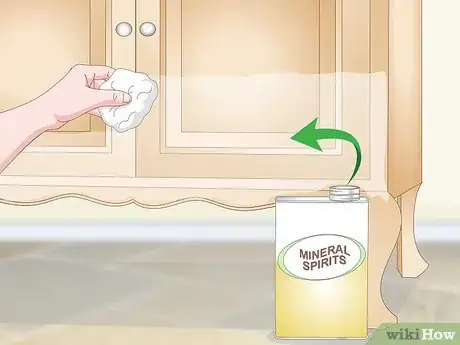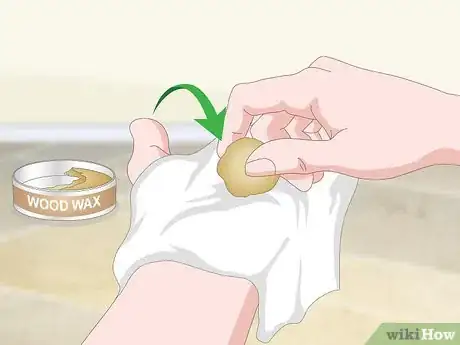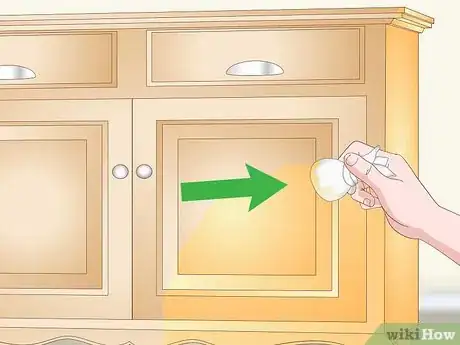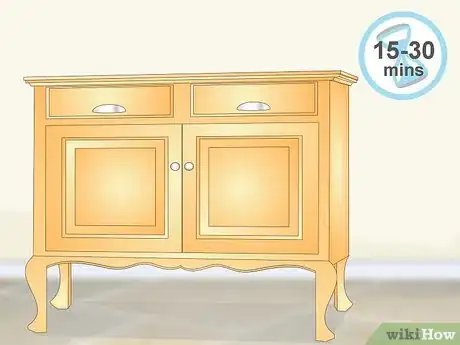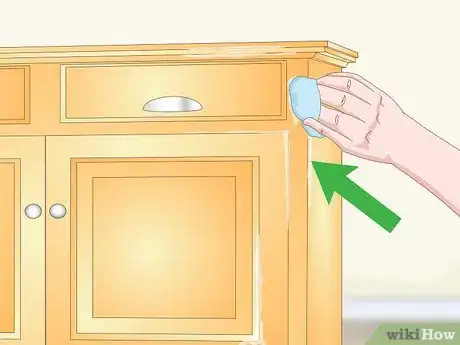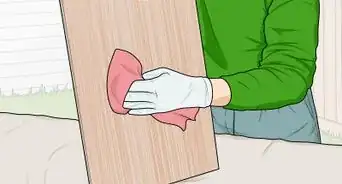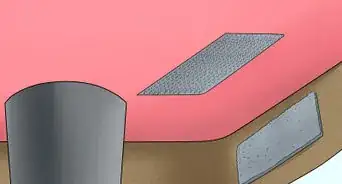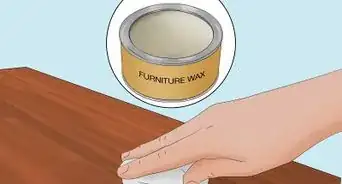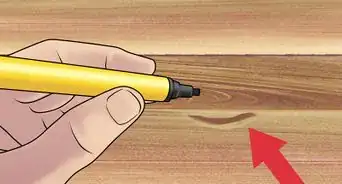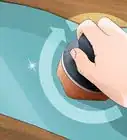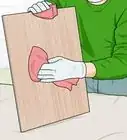This article was co-authored by Eduardo Peralta. Eduardo Peralta is a House Cleaning Specialist and the Manager of Best Maid House Cleaning based in San Jose, California. With over five years of experience, Eduardo and the Best Maid House Cleaning team specialize in home deep-cleaning, post-construction cleaning, and green and eco-friendly cleaning services. Best Maid House Cleaning is fully licensed and insured.
There are 7 references cited in this article, which can be found at the bottom of the page.
This article has been viewed 8,418 times.
When your wood furniture is looking dull and dingy, it's probably time to restore it by polishing it. Polish your furniture with furniture oil if it already has an oil finish, or use a wood furniture wax if it has a wax finish. Both methods can be used on furniture that doesn't have a finish yet. Whichever method you use, make sure to properly clean the piece of furniture first. Apply the oil or wax polish with a clean cloth, and always rub it in with the grain of the wood. Soon enough, your furniture will look new and shiny again!
Steps
Using Oil Polishes on Oiled Furniture
-
1Rub a coin in a hidden area to make sure that the finish isn't wax. Hold a coin between your thumb and index finger. Rub the edge of it against a hidden area of the finish, such as underneath the seat or on the inside of a chair leg. Nothing will flake off if the finish is oil.[1]
- It can be hard to tell the difference between finishes just by looking at them. Since wax sits on top of the wood, it will flake off when you scrape at it with a coin. Since oil soaks into the wood, the finish will not come off when you perform this test.
-
2Purchase a wood furniture oil product or make your own. There are many commercial wood oil products you can purchase, or you can just as easily (and more cheaply) make your own. Mix 1 cup (236.5 ml) of mineral oil, tung oil, linseed oil, or jojoba oil with 1 tsp (4.9 ml) of lemon juice to create your own lemon-scented furniture oil.[2]
- Use oil to polish your furniture when it already has an oil finish or is unfinished. Never mix oil and wax polishes or you will create a gummy finish on the furniture.
Advertisement -
3Wipe the wood furniture clean with a damp microfiber cloth. Dip a microfiber cloth in hot water mixed with a few drops of dish detergent. Wring it out completely so it is barely damp, then wipe down the whole piece of furniture to clean off dust and dirt.[3] [4]
- Try to go with the grain of the wood as much as possible when you wipe the furniture down to remove dust and dirt more easily.
-
4Dry off the furniture with a clean dry microfiber cloth. Wipe down the whole piece again with a second dry cloth right after you clean it with the damp cloth. Make sure it is completely dry before you proceed with polishing it.[5] [6]
- If the piece of furniture is particularly big, then it is a good idea to work in sections so you don't let any water soak into the wood. Clean 1 area with the damp cloth, then immediately dry it with the dry cloth.
-
5Pour a bit of wood oil onto another clean microfiber cloth. You don't need a lot since you will be applying more oil to the cloth as you work. Just soak a 1–2 in (2.5–5.1 cm) area of the cloth with the oil to get started.[7] [8]
- Alternatively, you can pour some furniture oil into a dish and dip the cloth into it as you go so you don't accidentally pour out too much onto the cloth.
-
6Rub the furniture oil into the furniture, going with the grain. Start at one side of the piece, work in small sections, and add more oil to your cloth as you work when it becomes dry. You will see the furniture start to regain its shine almost immediately. Move on to the next area of the furniture when one area becomes shiny.[9]
- The drier the wood is, the more “thirsty” it will be. You will need more oil to polish a piece that hasn't been polished in a long time compared to a piece that has been cared for regularly.
- Work in the direction of the wood grain to evenly coat any small porous cracks in the wood.[10]
Tip: Make sure not to miss any spots. Be extra careful to rub oil in well to any intricately carved spots, behind moving parts like drawers, and behind hardware like drawer handles.
-
7Let the furniture dry for at least 2 hours before you use it. Leave the furniture to air dry and absorb all of the oil. It will still have a “wet” look for at least a few hours after you polish it with oil, or even a few days if you can.[11] [12]
- Keep your wood furniture clean and polished with wood oil regularly to take care of it and prolong its life.
Applying Wax Polishes to Waxed Furniture
-
1Confirm that the finish is wax by testing it with a coin. Pick up a coin between your thumb and index finger. Scrape the edge of it firmly against the finish in a hidden area. The finish will start to flake off if it is wax.[13]
- Since wax sits on top of the wood, it will flake off when you scrape at it with a coin. If nothing flakes off, then your furniture may have an oil finish.
-
2Buy a wood wax to polish and protect your furniture. Use wax to polish your furniture when it already has a layer of old wax finish on it, or when it has not been finished with any kind of polish yet. Use wax with a pigment that matches the furniture's finish to conceal scratches, or use clear wax with any color of wood furniture.[14]
- Compared to polishing furniture with a wood oil polish, wax polishes will leave more of a glowing sheen instead of a super glossy finish.
- If your wood furniture has already been polished with oil, then stick to using oil polishes instead of wax. Use wax only on furniture that already has a wax finish or is unfinished. If you mix oils and waxes, it will create a gummy finish on the furniture.
Tip: You can also fill in scratches with fine tip markers that match the color of the furniture's finish. Art supply stores carry a wide variety of colored markers.
-
3Wipe the wood with mineral spirits to remove dirt and residue from old polishes. Open windows for ventilation before you work with mineral spirits. Dampen a soft cloth with mineral spirits and wipe down the whole piece of furniture, then dry off any excess with a clean dry cloth.[15]
- Make sure the cloth isn't dripping with mineral spirits. You just want it to be damp, not soaked.
-
4Wrap a clean cotton cloth around a ball of wax. The wax ball needs to be about the size of a walnut. The wax will seep through the cotton as you rub the furniture down with it wrapped inside the cloth.[16]
- You can cut up an old t-shirt to make a bunch of cotton cloths for waxing your furniture.
-
5Rub the cloth and wax all over the furniture, going with the grain. Evenly apply just enough wax to create a thin glossy layer. Start at one end of the piece and work in small areas. Move on to the next area when the part you are working on has a thin sheen of wax.[17]
- If you are working on a large piece of furniture, then wax and buff areas no larger than 3 ft (0.91 m) by 3 ft (0.91 m) at a time.
-
6Let the wax absorb into the furniture for 15-30 minutes. Wait until the wax starts to look dull, but not until it is completely dry. It will be much harder to buff smooth if you let it dry longer than this.[18]
- If you let the wax dry too much, simply apply another layer over top of the dried layer and it will soften the layer underneath.
-
7Buff the excess wax off with a clean cotton cloth. Wipe off the wax firmly with the grain. Keep wiping to buff the wax until you don't see any swirls of wax left on the furniture.[19]
- A wax coat of polish on wood furniture can last for years and doesn't require any special care. Just repeat the process next time the finish looks dull and worn.
Expert Q&A
-
QuestionWhat is the best thing to clean wood furniture with?
 Eduardo PeraltaEduardo Peralta is a House Cleaning Specialist and the Manager of Best Maid House Cleaning based in San Jose, California. With over five years of experience, Eduardo and the Best Maid House Cleaning team specialize in home deep-cleaning, post-construction cleaning, and green and eco-friendly cleaning services. Best Maid House Cleaning is fully licensed and insured.
Eduardo PeraltaEduardo Peralta is a House Cleaning Specialist and the Manager of Best Maid House Cleaning based in San Jose, California. With over five years of experience, Eduardo and the Best Maid House Cleaning team specialize in home deep-cleaning, post-construction cleaning, and green and eco-friendly cleaning services. Best Maid House Cleaning is fully licensed and insured.
House Cleaning Specialist Always start by dusting the wood. If there are any sticky residues, clean them with a damp microfiber towel, as that usually is enough. The surface should be completely clean and dry before polishing.
Always start by dusting the wood. If there are any sticky residues, clean them with a damp microfiber towel, as that usually is enough. The surface should be completely clean and dry before polishing.
Things You'll Need
Using Oil Polishes
- Wood furniture oil
- 3 microfiber cloths
- Hot water
- Dish detergent
Applying Wax Polishes
- Wood furniture wax
- 3 cotton cloths
- Mineral spirits
References
- ↑ https://patch.com/connecticut/clinton/bp--wax-polish-or-oil-furniture
- ↑ https://adebtfreestressfreelife.com/how-to-polish-wood-like-a-pro/
- ↑ Eduardo Peralta. House Cleaning Specialist. Expert Interview. 29 October 2021.
- ↑ https://www.homedit.com/furniture-cleaning/
- ↑ Eduardo Peralta. House Cleaning Specialist. Expert Interview. 29 October 2021.
- ↑ https://www.homedit.com/furniture-cleaning/
- ↑ Eduardo Peralta. House Cleaning Specialist. Expert Interview. 29 October 2021.
- ↑ https://www.bobvila.com/articles/homemade-furniture-polish/
- ↑ https://www.bobvila.com/articles/homemade-furniture-polish/
- ↑ Eduardo Peralta. House Cleaning Specialist. Expert Interview. 29 October 2021.
- ↑ Eduardo Peralta. House Cleaning Specialist. Expert Interview. 29 October 2021.
- ↑ https://www.homedit.com/furniture-cleaning/
- ↑ https://patch.com/connecticut/clinton/bp--wax-polish-or-oil-furniture
- ↑ https://adebtfreestressfreelife.com/how-to-polish-wood-like-a-pro/
- ↑ https://www.familyhandyman.com/woodworking/furniture-repair/wood-finishing-tips-how-to-renew-a-finish/
- ↑ https://www.familyhandyman.com/woodworking/furniture-repair/wood-finishing-tips-how-to-renew-a-finish/
- ↑ https://www.familyhandyman.com/woodworking/furniture-repair/wood-finishing-tips-how-to-renew-a-finish/
- ↑ https://www.familyhandyman.com/woodworking/furniture-repair/wood-finishing-tips-how-to-renew-a-finish/
- ↑ https://www.apartmenttherapy.com/step-by-step-basics-how-to-polish-wood-furniture-173882
